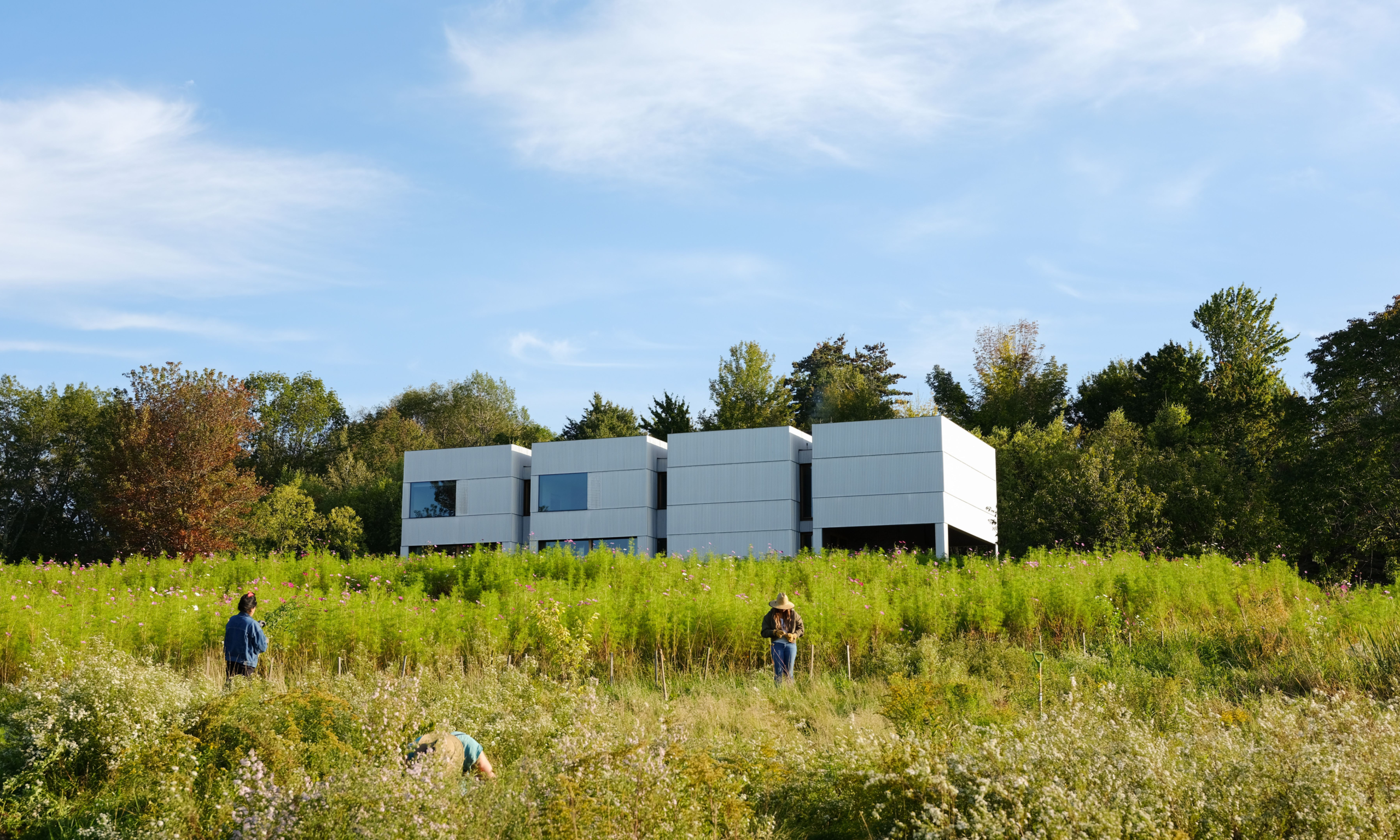The Ai Weiwei-designed Forge Project facility in upstate New York. Photo by Thatcher Keats, courtesy of Forge Project
Forge Project—the New York-based social-justice initiative founded to support Indigenous art, culture and decolonial education—is transitioning to a non-profit model that leaders believe will help the institution be more sustainable in the long term and serve as an example for Native self-determination.
The organisation was first launched in 2021 by Becky Gochman—who is married to an heir of the wealthy Gochman family, founders of the Academy Sports + Outdoors retail chain—and Zach Feuer, a former New York gallerist and the director of the Gochman family’s collection, which largely focuses on work by contemporary Indigenous artists. In the past three years, under the direction of Candice Hopkins, Forge Project’s executive director and chief curator and Sarah Biscarra Dilley, the director of Indigenous programmes and relationality, Forge Project has supported almost 300 Indigenous artists, hosted other cultural workers and cultivated new audiences for their work, as well as cared for a collection of more than 175 works by contemporary Indigenous artists. The organisation has also taken part in important collaborations, like one with Bard College to overhaul the university’s Native American-studies programme.
The organisation first opened as a limited liability company, “simply because that was the fastest way we could get off the ground, and because we felt there was a real urgency to our work”, according to Hopkins.
But even in Forge Project’s earliest days, Gochman and Feuer (who are not Indigenous) wanted to enable self-determination and Indigenous leadership at the institution, Hopkins says. For more than a year, Forge Project has been working to develop a new organisational model that will open the now non-profit up for more financial support from diverse sources.
As part of the transition, Forge Project has created an Indigenous Steering Council to help guide the institution and its vision, a model of governance not necessarily unique in Indigenous communities, Hopkins says. Members of the council serving three-year terms include Indigenous artists like Sky Hopinka, Jolene Rickard, G. Peter Jemison and Jeffrey Gibson (who opened the US pavilion at the Venice Biennale last week as the first Indigenous artist to represent the country with a solo show there). Unlike other non-profits, Forge Project is now structured so that the board of directors will answer to the Steering Council.
Candice Hopkins, Forge Project's executive director and and chief curator. Photo by Thatcher Keats, courtesy of Forge Project
“One of the questions that we wanted to answer as we transitioned was, ‘How do we always enable Indigenous leadership, no matter the makeup of the board?’” Hopkins says. “We are really conscious of the fact that the majority of wealth in this settler country is not held in Native hands. That means a lot of our supporters as we grow might not necessarily be Native philanthropists, but we hope that there are folks who are really invested in ideas of how philanthropy can enable repair and restitution.”
As part of reaching those goals, Forge Project has signed a memorandum of understanding with the Stockbridge-Munsee Band of Mohicans, a tribe made up of members descended from the Moh-He-Con-Nuck, or the People of the Waters That Are Never Still. Forge Project’s Ai Weiwei-designed spaces are located in Taghkanic, New York, on a 60-acre campus on unceded lands of the Moh-He-Con-Nuck. Aims of the collaboration include expanding research and cultural access to the site and supporting avenues of return.
“We’re thinking about how the work we do can also directly benefit them,” Hopkins says.
Indigenous art has slowly received more mainstream attention over the past decade or so, Hopkins says, and has accelerated recently. This year’s Venice Biennale highlighted and awarded Indigenous artists for their work, and the market is slowly catching up to increased institutional and curatorial awareness.
“This has always been central for us, it just hasn't been central for everyone else,” Hopkins says. “I feel like there's real momentum right now with Native artists, and rightly so. Honestly, they're making some of the best work.”

